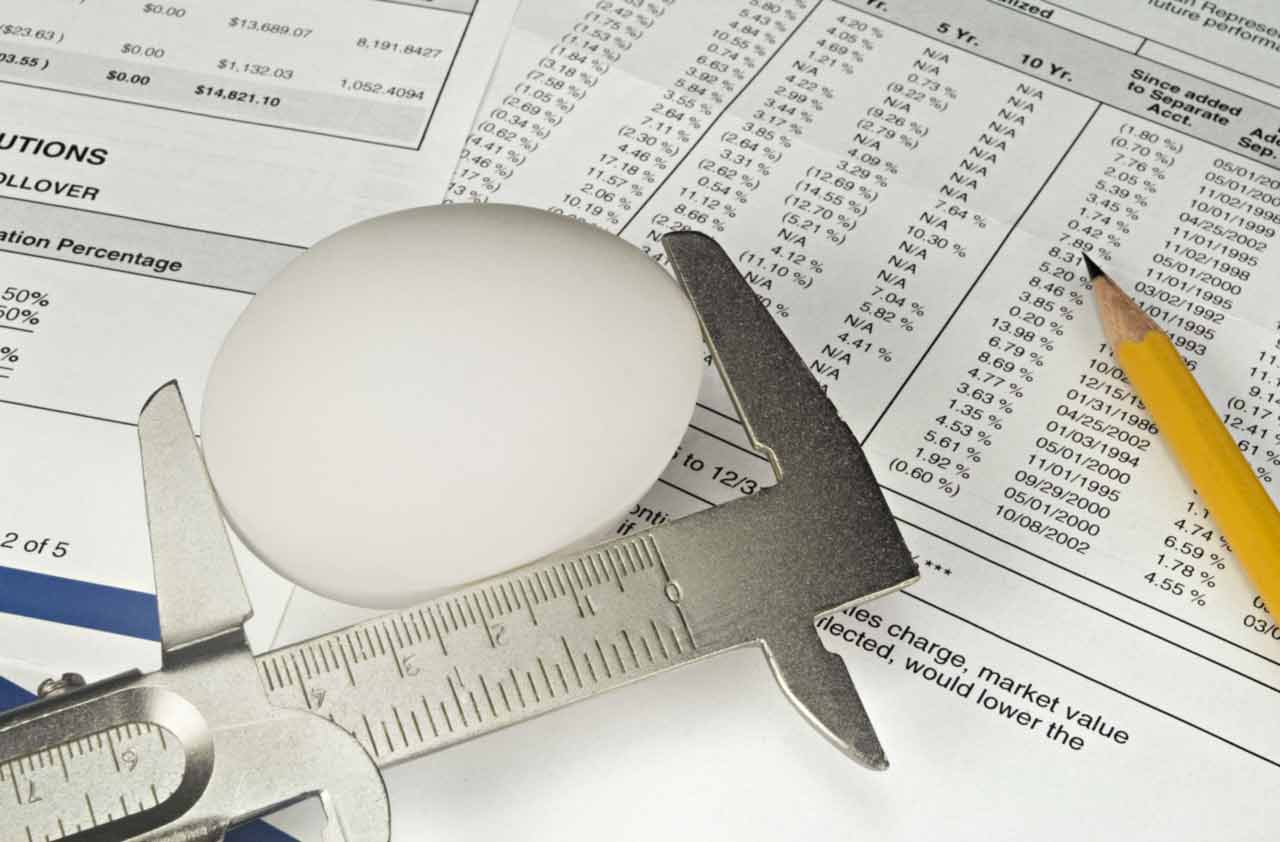How Should YOU Measure Your Investment Performance?
Investors shouldn't be obsessed with their portfolio's performance, but an annual evaluation is key to keeping you on track.


I’ve spent over 25 years in the financial advisory profession but recently had a startling realization about investment performance. During a friendly debate with a friend who manages a small-cap mutual fund, I realized even seasoned investment professionals can have misperceptions about investment performance. My friend had a fixation on top quartile performance, a key measure of his professional ranking, but one with little application in the real world — where clients typically own mutual funds representing various asset classes.
Our debate got me to thinking: How should the average investor measure investment performance? I recommend investors focus on two components of performance:
How is my performance number calculated?
From just $107.88 $24.99 for Kiplinger Personal Finance
Become a smarter, better informed investor. Subscribe from just $107.88 $24.99, plus get up to 4 Special Issues

Sign up for Kiplinger’s Free Newsletters
Profit and prosper with the best of expert advice on investing, taxes, retirement, personal finance and more - straight to your e-mail.
Profit and prosper with the best of expert advice - straight to your e-mail.
How is my account doing relative to a fair benchmark?
Your Performance Calculation
The performance calculation methodology involves two key variables: 1) the mathematical formula used to produce a return figure and 2) the portfolio(s) that are being measured. Most professional money managers use a Global Investment Performance Standards (GIPS) compliant methodology to calculate investment performance. Brokers, Registered Investment Advisers and custodians often provide performance information to clients in their account statements. It is important to ask your provider if their performance report uses an approved GIPS methodology. Time-weighted returns are the most commonly used measure.
Interestingly, GIPS does not require investment performance to be reported net of fees. Consumers would be wise to ask their adviser for performance reports net of fees. After all, it’s not what you earn, it’s what you keep that is important.
Equally important is understanding whether the performance number is specific to your account, or merely a listing of the performance of each mutual fund. According to the GIPS guidance statement on fees, “The GIPS standards are based on the concept of presenting composite performance to prospective clients rather than presenting individual portfolio returns to existing clients (emphasis added).” Very simply, it is permissible for a broker or custodian to show a performance number on your statement for XYZ mutual fund that may or may not be your actual investment performance.
I’ve seen brokerage statements list a client’s various mutual fund’s performance, but not include the client’s overall account performance. Investors should ask their adviser for their specific account’s performance net of all fees. Most advisers have software that can calculate this.
Which Benchmark to Use
What about benchmarks? How can investors gauge their performance relative to other alternatives? This simple question raises many issues.
Should you benchmark your portfolio versus an index like the S&P 500? What’s a fair comparison for a portfolio invested 65% equity / 35% fixed? What about an all-equity portfolio comprised of large-cap, small-cap, international, REITs and emerging markets?
Morningstar provides a quarterly list of average returns by category, which is a reasonable basic benchmark to measure a specific fund. For accounts using a diversified, multiple asset class approach, Morningstar provides returns for different asset allocation funds, sorted by equity ranges. This is a helpful guide should your portfolio be comprised of large-cap, small-cap, international and emerging market funds.
The Bottom Line
While an obsession with performance can be counterproductive (often leading to chasing past winners and inferior performance), an annual review of portfolio performance is something all investors should undertake. Make sure you understand what is being measured and how it is being measured so you can track progress toward your goals.
Profit and prosper with the best of Kiplinger's advice on investing, taxes, retirement, personal finance and much more. Delivered daily. Enter your email in the box and click Sign Me Up.

Mike Palmer has over 25 years of experience helping successful people make smart decisions about money. He is a graduate of the University of North Carolina at Chapel Hill and is a CERTIFIED FINANCIAL PLANNER™ professional. Mr. Palmer is a member of several professional organizations, including the National Association of Personal Financial Advisors (NAPFA) and past member of the TIAA-CREF Board of Advisors.
-
 Dow Adds 646 Points, Hits New Highs: Stock Market Today
Dow Adds 646 Points, Hits New Highs: Stock Market TodayIt was "boom" for the Dow but "bust" for the Nasdaq following a December Fed meeting that was less hawkish than expected.
-
 5 Types of Gifts the IRS Won’t Tax: Even If They’re Big
5 Types of Gifts the IRS Won’t Tax: Even If They’re BigGift Tax Several categories of gifts don’t count toward annual gift tax limits. Here's what you need to know.
-
 The 'Scrooge' Strategy: How to Turn Your Old Junk Into a Tax Deduction
The 'Scrooge' Strategy: How to Turn Your Old Junk Into a Tax DeductionTax Deductions We break down the IRS rules for non-cash charitable contributions. Plus, here's a handy checklist before you donate to charity this year.
-
 I'm a Tax Attorney: These Are the Year-End Tax Moves You Can't Afford to Miss
I'm a Tax Attorney: These Are the Year-End Tax Moves You Can't Afford to MissDon't miss out on this prime time to maximize contributions to your retirement accounts, do Roth conversions and capture investment gains.
-
 I'm an Investment Adviser: This Is the Tax Diversification Strategy You Need for Your Retirement Income
I'm an Investment Adviser: This Is the Tax Diversification Strategy You Need for Your Retirement IncomeSpreading savings across three "tax buckets" — pretax, Roth and taxable — can help give retirees the flexibility to control when and how much taxes they pay.
-
 Could an Annuity Be Your Retirement Safety Net? 4 Key Considerations
Could an Annuity Be Your Retirement Safety Net? 4 Key ConsiderationsMore people are considering annuities to achieve tax-deferred growth and guaranteed income, but deciding if they are right for you depends on these key factors.
-
 I'm a Financial Pro: Older Taxpayers Really Won't Want to Miss Out on This Hefty (Temporary) Tax Break
I'm a Financial Pro: Older Taxpayers Really Won't Want to Miss Out on This Hefty (Temporary) Tax BreakIf you're age 65 or older, you can claim a "bonus" tax deduction of up to $6,000 through 2028 that can be stacked on top of other deductions.
-
 Meet the World's Unluckiest — Not to Mention Entitled — Porch Pirate
Meet the World's Unluckiest — Not to Mention Entitled — Porch PirateThis teen swiped a booby-trapped package that showered him with glitter, and then he hurt his wrist while fleeing. This is why no lawyer will represent him.
-
 Smart Business: How Community Engagement Can Help Fuel Growth
Smart Business: How Community Engagement Can Help Fuel GrowthAs a financial professional, you can strengthen your brand while making a difference in your community. See how these pros turned community spirit into growth.
-
 In 2026, the Human Touch Will Be the Differentiator for Financial Advisers
In 2026, the Human Touch Will Be the Differentiator for Financial AdvisersAdvisers who leverage innovative technology to streamline tasks and combat a talent shortage can then prioritize the irreplaceable human touch and empathy.
-
 How Financial Advisers Can Deliver a True Family Office Experience
How Financial Advisers Can Deliver a True Family Office ExperienceThe family office model is no longer just for the ultra-wealthy. Advisory firms will need to ensure they have the talent and the tech to serve their clients.